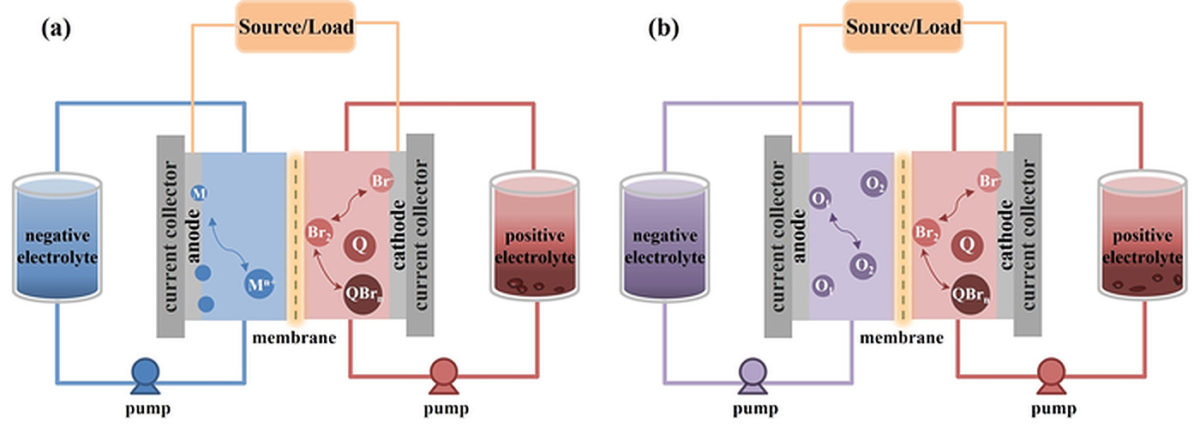Researchers from the Dalian Institute of Chemical Physics in China have investigated how to overcome the technical and economic hurdles that are preventing high energy density bromine-based flow batteries (Br-FBs) from becoming a mainstream technology for the storage of renewable energy sources.
“Br-FBs have been one of the most promising energy storage technologies with attracting advantages of low price, wide potential window, and long cycle life,” the scientists explained. “However, Br-FBs suffer from the sluggish kinetics of Br2/Br– redox couple and serious self-discharge, which hinder the further commercialization and industrialization of Br-FBs.”
They also pointed out the electrodes used in these devices as one of the critical components, as they provide the reaction sites for redox couples and may have a significant effect on the performance of Br-FBs. They also provided a comprehensive overview of different high-performance cathodes for high-power density and long-lifespan Br-FBs and these devices were compared with commonly used cathode materials. “At present, porous carbon fiber-based materials, especially carbon felts (CFs) and graphite felts (GFs), are the most commonly used cathodes in Br-FBs due to their low price, good electronic conductivity, outstanding corrosion resistance as well as controllable surface properties.”
Their work also identified modification methods aimed at improving the cathodes' performance, such as surface treatment, metallic element modification, nonmetallic element modification, and structure decoration. The modification methods, however, are still unable to cope with poor bromine retention ability and unclear mechanisms of Br2/Br– redox reactions.
Looking forward, the Chinese group identified the most important challenges to address in future research: “The further development directions are as follows: (i). To continually develop advanced electrodes of Br-FBs with high activity and bromine retention capacity by enhancing their chemical surfaces and improving their physical structures. (ii). The reaction mechanisms on the electrode are not clear and need in-depth investigations. (iii) To improve the bromine fixing/retention capacity of electrodes by structural design, namely, to inhibit the diffusion and migration of bromine species to the negative side.”
Their findings were presented in the paper “Progress and Perspective of the Cathode Materials towards Bromine-Based Flow Batteries,” which was recently published in Energy Material Advances.
This content is protected by copyright and may not be reused. If you want to cooperate with us and would like to reuse some of our content, please contact: editors@pv-magazine.com.




Australian company Redflow have been making Zinc-Bromine flow batteries for years. These batteries are already in use worldwide.